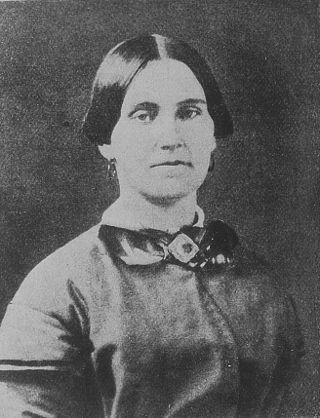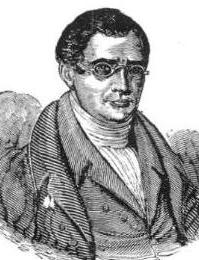
Lebanon is a city in and the county seat of Lebanon County, Pennsylvania, United States. The population was 26,814 at the 2020 census.

Tuscarora is a census-designated place (CDP) that is located in Schuylkill County, Pennsylvania, United States. The population was 980 at the time of the 2010 census.

Herman Webster Mudgett, better known as Dr. Henry Howard Holmes or H. H. Holmes, was an American con artist and multiple murderer active between 1891 and 1894. By the time of his execution in 1896, Holmes had engaged in a lengthy criminal career that included insurance fraud, forgery, swindling, three to four bigamous illegal marriages, horse theft and murder. His most notorious crimes took place in Chicago around the time of the World's Columbian Exposition in 1893.
The Ogoni Nine were a group of nine activists from the Ogoni region of Nigeria who opposed the operating practices of the Royal Dutch Shell oil corporation. Their members included outspoken author and playwright Ken Saro-Wiwa, Saturday Dobee, Nordu Eawo, Daniel Gbooko, Paul Levera, Felix Nuate, Baribor Bera, Barinem Kiobel, and John Kpuine.

Mary Elizabeth Jenkins Surratt was an American boarding house owner in Washington, D.C., who was convicted of taking part in the conspiracy which led to the assassination of U.S. President Abraham Lincoln in 1865. Sentenced to death, she was hanged and became the first woman executed by the U.S. federal government. She maintained her innocence until her death, and the case against her was and remains controversial. Surratt was the mother of John Surratt, who was later tried in the conspiracy, but due to statute of limitations, was not convicted.

The Hall–Mills murder case involved Edward Wheeler Hall, an Episcopal priest, and Eleanor Mills, a member of his choir with whom he was having an affair, both of whom were murdered on September 14, 1922, in Somerset, New Jersey, United States. Hall's wife and her brothers were accused of committing the murders, but were acquitted in a 1926 trial. In the history of journalism, the case is largely remembered for the vast extent of newspaper coverage it received nationwide; it has been regarded as an example of a media circus. It would take the Lindbergh kidnapping trial in the 1930s to eclipse the high profile of the Hall-Mills case.

Francis Joseph Sheeran, also known as "The Irishman", was an American labor union official and enforcer for Jimmy Hoffa and Russell Bufalino. He was accused of having links to the Bufalino crime family in his capacity as a high-ranking official in the International Brotherhood of Teamsters (IBT), the president of Local 326.

Samuel Bland Arnold was an American Confederate sympathizer involved in a plot to kidnap U.S. President Abraham Lincoln in 1865. He had joined the Confederate Army shortly after the start of the Civil War but was discharged due to health reasons in 1864.

Fort Indiantown Gap, also referred to as "The Gap" or "FIG", is a census-designated place and National Guard Training Center primarily located in Lebanon County, Pennsylvania, United States. A portion of the installation is located in eastern Dauphin County. It is located adjacent to Interstate 81, 23 miles (37 km) northeast of Harrisburg, just north of the northern terminus of Pennsylvania Route 934 at I-81's Exit 85.

Pennsylvania Route 443 is an 80-mile-long (130 km) east–west state highway in the US state of Pennsylvania. The western terminus is at an intersection with State Route 3009 at North Front Street on the east bank of the Susquehanna River in the community of Fort Hunter in Middle Paxton Township, just west of an interchange with the U.S. Route 22 /US 322 freeway. The eastern terminus is at US 209 in Lehighton. The route runs through rural areas in the Ridge-and-Valley Appalachians in Dauphin, Lebanon, Schuylkill, and Carbon counties, serving Fort Indiantown Gap, Pine Grove, Schuylkill Haven, Orwigsburg, New Ringgold, and South Tamaqua. PA 443 intersects several major roads, including US 22/US 322 near its western terminus, PA 72 in Union Township, Interstate 81 (I-81) near Pine Grove, PA 61 between Schuylkill Haven and Orwigsburg, and PA 309 in South Tamaqua.

Father Nicholas Sheehy (1728–1766) was an 18th-century Irish Roman Catholic priest who was executed on the charge of accessory to murder. Father Sheehy was a prominent and vocal opponent of the Penal Laws, which disenfranchised and persecuted Catholics in Ireland. His conviction is widely regarded as an act of judicial murder amongst supporters of the Irish rebellion.
The London Burkers were a group of body snatchers operating in London, England, who apparently modeled their activities on the notorious Burke and Hare murders. They came to prominence in 1831 for murdering victims to sell to anatomists, by luring and drugging them at their dwelling in the northern end of Bethnal Green, near St Leonard's, Shoreditch in London. They were also known as the Bethnal Green Gang.

Ephraim Kingsbury Avery was a Methodist minister who was among the first clergymen tried for murder in the United States. Avery is often cited as "the first", although it is thought there is at least one case that precedes Avery's.
George Lane, better known as Clubfoot George, was an alleged outlaw who was hanged on January 14, 1864 in Nevada City, Montana. Lane was later alleged to have been a member of a criminal gang known as the Gang of Innocents and sentenced to death. The execution was carried out by the Montana Vigilantes, a committee which functioned during Montana's gold rush in 1863 and 1864.

On March 27, 1993, in Mesquite, Texas, convenience store clerk Pete Shrum was shot and killed by two armed robbers. Shrum cooperated with the robbers' demands and made no attempt to fight back against them. Despite his compliance, the robbers shot and killed him. The crime was recorded by two security cameras in the store. Footage of the murder was shown on television to help identify the killers. Since then, the footage has been featured in many documentaries relating to crime, making it well known. The murder was described as a rare death penalty case, and was the first of only two such cases expected to be tried in Dallas County in 1993. Both suspects were spared the death penalty but were convicted and sentenced to life in prison for the murder.
Samuel "Mingo Jack" Johnson was an African American man falsely accused of rape. He was brutally beaten and hanged by a mob of white men in Eatontown, New Jersey.
Lebanon Cemetery was an African-American cemetery in Philadelphia, Pennsylvania established in 1849. It was one of only two private African-American cemeteries in Philadelphia at the time. Lebanon Cemetery was condemned in 1899. The bodies were reinterred in 1902 to Eden Cemetery in Collingdale, Pennsylvania and the cemetery was closed in 1903.
Leonard Woods was an African-American man who was lynched by a mob in Pound Gap, on the border between Kentucky and Virginia, after they broke him out of jail in Whitesburg, Kentucky, on November 30, 1927. Woods was alleged to have killed the foreman of a mine, Herschel Deaton. A mob of people from Kentucky and Virginia took him from the jail and away from town and hanged him, and riddled his body with shots. The killing, which became widely publicized, was the last in a long line of extrajudicial murders in the area, and, prompted by the activism of Louis Isaac Jaffe and others, resulted in the adoption of strong anti-lynching legislation in Virginia.

In 1813, Lebanon County, Pennsylvania was founded from parts of Dauphin and Lancaster counties. The new county did not yet have an official courthouse, so the county commissioners rented the Stoy House at 924 Cumberland Street to conduct court sessions. James Buchanan, who would become the 15th president of the United States, was one of the first lawyers to practice law in Lebanon County . A new official Lebanon County courthouse was built starting in 1817 and finished in 1818. It was located on the northwest corner of 8th and Cumberland Streets. As the county grew two annexes were added, in 1854 and 1887.














